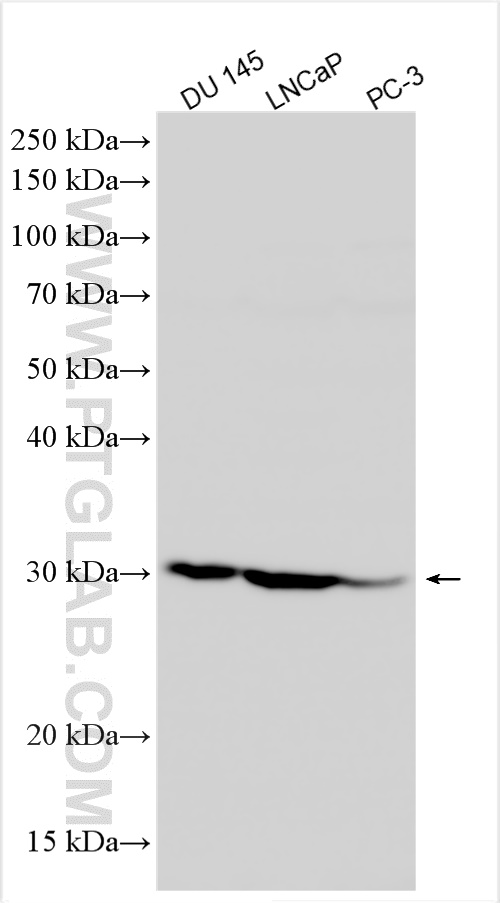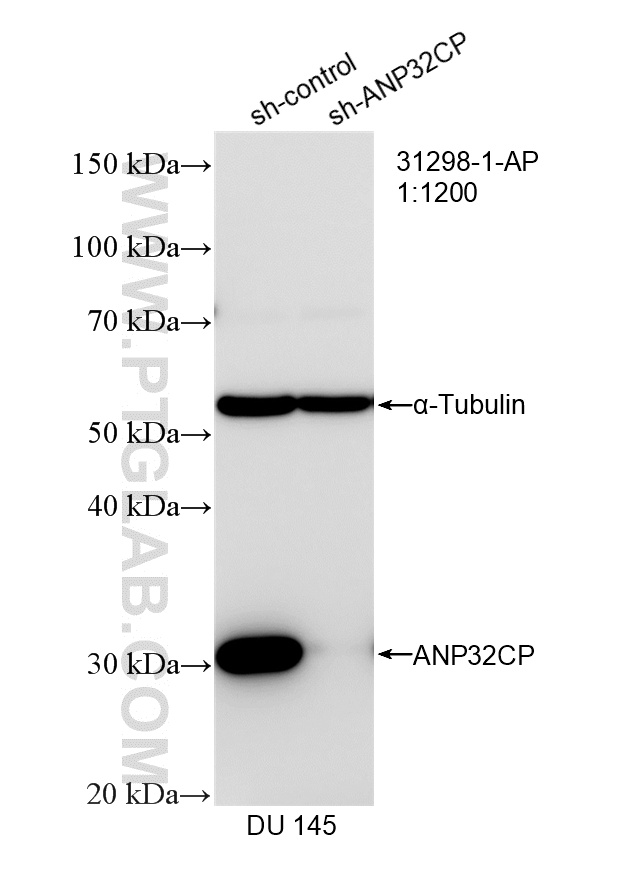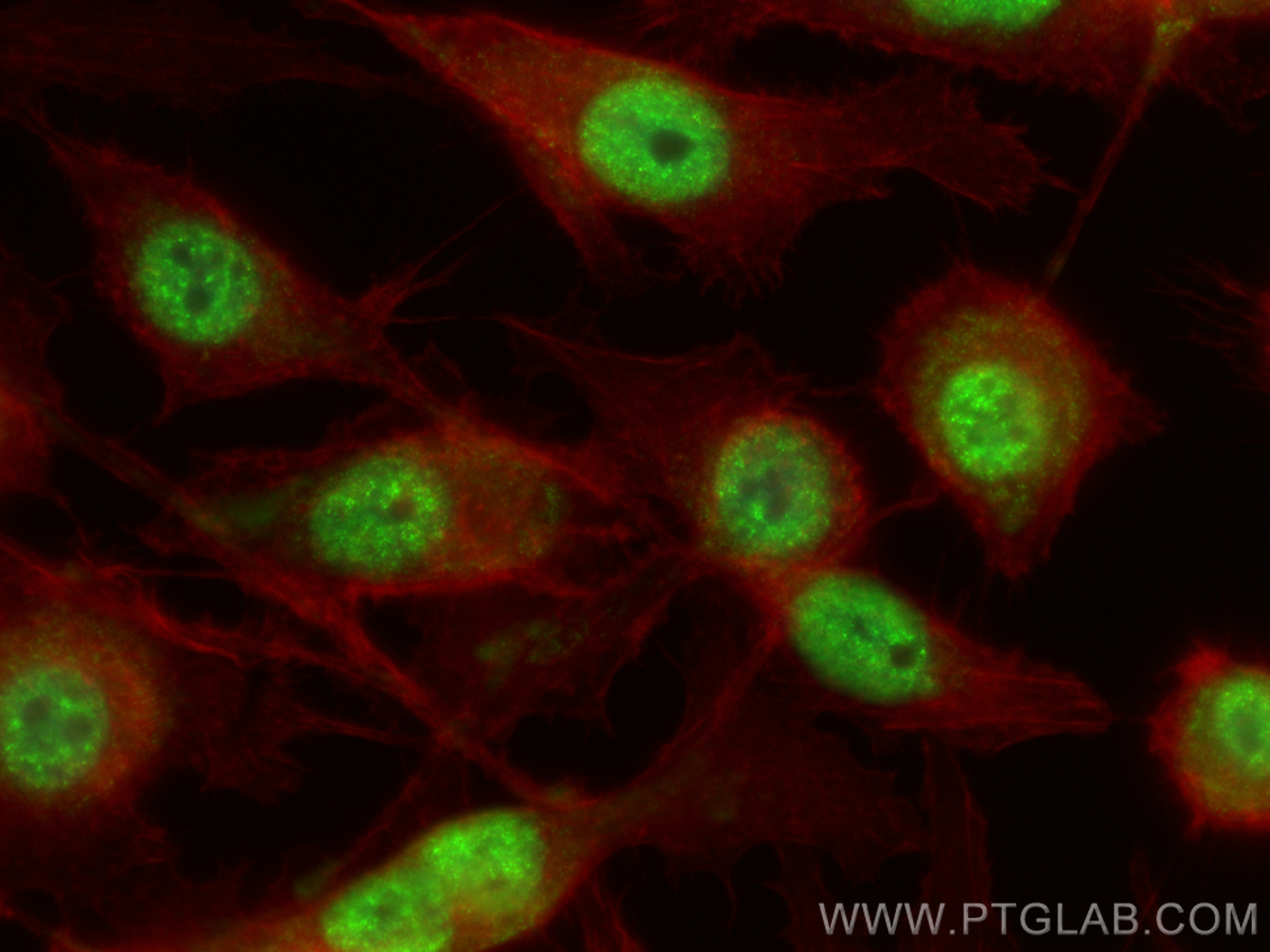验证数据展示
经过测试的应用
| Positive WB detected in | DU 145 cells, LNCaP cells, PC-3 cells |
推荐稀释比
| 应用 | 推荐稀释比 |
|---|---|
| Western Blot (WB) | WB : 1:500-1:3000 |
| It is recommended that this reagent should be titrated in each testing system to obtain optimal results. | |
| Sample-dependent, Check data in validation data gallery. | |
产品信息
31298-1-AP targets ANP32CP in WB, ELISA applications and shows reactivity with human samples.
| 经测试应用 | WB, ELISA Application Description |
| 经测试反应性 | human |
| 免疫原 |
CatNo: Ag35293 Product name: Recombinant human ANP32CP protein Source: e coli.-derived, PGEX-4T Tag: GST Domain: 141-234 aa of NM_012403.1 Sequence: LDSCYWDHKEAPYSDIEDHVEGLDDEEEGEHEEEYDEDAQVVEDEEGEEEEEEGEEEDVSGGDEEDEEGYNDGEVDGEEDEEELGEEERGQKRK 种属同源性预测 |
| 宿主/亚型 | Rabbit / IgG |
| 抗体类别 | Polyclonal |
| 产品类型 | Antibody |
| 全称 | acidic (leucine-rich) nuclear phosphoprotein 32 family, member C |
| 别名 | ANP32C, PP32R1, Tumorigenic protein pp32r1 |
| 计算分子量 | 27 kDa |
| 观测分子量 | 27-30 kDa |
| GenBank蛋白编号 | NM_012403.1 |
| 基因名称 | ANP32C/PP32R1 |
| Gene ID (NCBI) | 23520 |
| RRID | AB_3669935 |
| 偶联类型 | Unconjugated |
| 形式 | Liquid |
| 纯化方式 | Antigen affinity Purification |
| UNIPROT ID | O43423 |
| 储存缓冲液 | PBS with 0.02% sodium azide and 50% glycerol, pH 7.3. |
| 储存条件 | Store at -20°C. Stable for one year after shipment. Aliquoting is unnecessary for -20oC storage. |
背景介绍
ANP32CP (acidic nuclear phosphoprotein 32 family member C, pseudogene), also known as PP32R1. It is expected to be located in nucleus and perinuclear region of cytoplasm. Expressed in activated stem cells, such as mobilized CD34+ cells and cord blood CD34+ cells, but not in resting bone marrow CD34+ cells. Expressed in a variety of neoplastic cell lines, mainly in prostatic adenocarcinoma cell lines. Not expressed in normal prostatic tissue (PMID: 10086381). The calculated molecular weight of ANP32CP is 27 kDa. The protein could be the product of a pseudogene. Gene encoding ANP32CP is intronless suggesting that is pseudogene generated by retrotransposition.
实验方案
| Product Specific Protocols | |
|---|---|
| WB protocol for ANP32CP antibody 31298-1-AP | Download protocol |
| Standard Protocols | |
|---|---|
| Click here to view our Standard Protocols |




